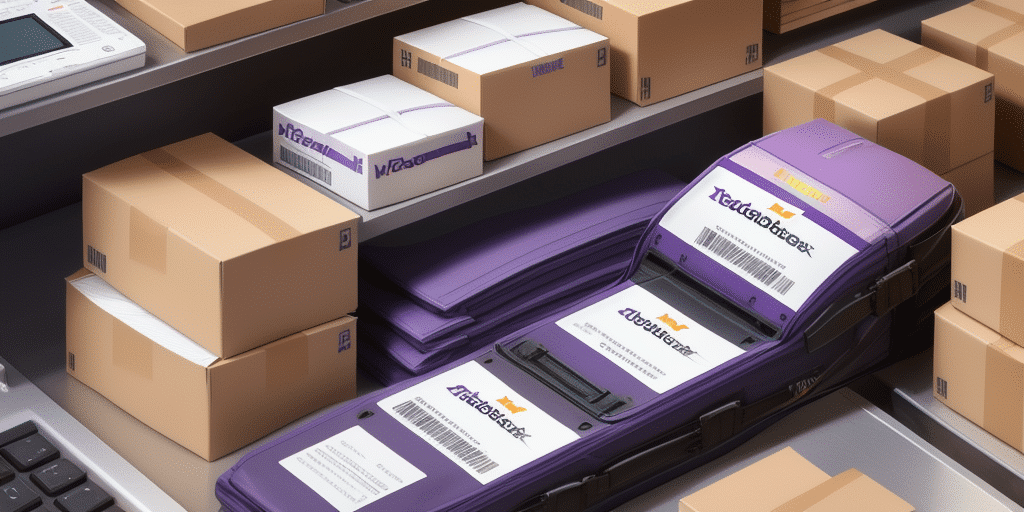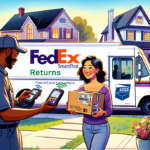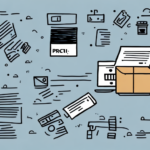How to Create a FedEx Return Label Using FedEx Ship Manager
Efficiently managing returns is crucial for maintaining customer satisfaction and streamlining your business operations. FedEx Ship Manager provides a comprehensive solution for creating return labels, ensuring that your return process is both convenient and reliable. This guide offers a step-by-step approach to generating FedEx return labels, setting up your account, and addressing common challenges.
Advantages of Using FedEx Ship Manager for Return Labels
Cost-Effective and Accessible
FedEx Ship Manager is a free tool accessible through your FedEx account online. Its user-friendly interface allows businesses to create return labels without incurring additional costs, making it an economical choice for managing returns.
Comprehensive Shipment Tracking
With FedEx Ship Manager, you gain complete visibility over your shipments. Real-time tracking and delivery notifications enable you to monitor the status of your returns, ensuring timely processing and reducing the risk of lost packages.
Diverse Shipping Options
The platform offers a variety of shipping methods, including ground, express, and international shipping. This flexibility allows you to select the most appropriate option based on cost, speed, and destination, catering to diverse customer needs.
Key Benefits of Using FedEx for Returns
Variety of Shipping Services
FedEx provides an extensive range of shipping services, from overnight delivery to economical ground shipping. This variety ensures that you can choose a service that aligns with your budget and delivery timelines.
Extensive Drop-Off Network
With over 2,200 FedEx Office locations and more than 40,000 drop boxes nationwide, FedEx offers a vast network for convenient package drop-off. This accessibility simplifies the return process for both businesses and customers.
Hassle-Free Returns Policy
FedEx's streamlined returns policy eliminates unexpected fees and charges, allowing customers to return items without additional costs. This transparency fosters trust and encourages repeat business.
Setting Up Your FedEx Ship Manager Account for Returns
Account Configuration
Begin by logging into your FedEx account and navigating to the Ship Manager tab. Select the "Create a Return" option to initiate the setup process. Ensure that your account information is up-to-date to facilitate seamless label creation.
Entering Return Details
Provide the necessary information for the return label, including the recipient's address, return reason, and any specific instructions. Accurate data entry is vital for ensuring that returns are processed without delays.
Step-by-Step Guide to Creating a Return Label with FedEx Ship Manager
- Enter Shipping Details: Input the recipient's address and contact information accurately to prevent delivery issues.
- Select Shipping Service: Choose the appropriate FedEx service based on your return requirements.
- Specify Package Type: Indicate whether you're returning a box, envelope, or another package type.
- Mark as Return: Select the "Return" option to categorize the shipment appropriately.
- Add Additional Services: Opt for services like pickup locations or delivery confirmation if needed.
- Create Label: Click the "Create Label" button to generate your return label.
FedEx Ship Manager also allows customization of your return label, enabling you to add your company logo, modify text styles, and include personalized messages. This enhances your brand's professionalism and provides a cohesive customer experience.
Best Practices for Accurate Address Entry on Return Labels
- Verify Complete Address: Ensure that the recipient's address is complete and accurate, including street, city, state, and ZIP code.
- Use Address Verification Tools: Utilize tools like the USPS ZIP Code Lookup to confirm address accuracy.
- Include Apartment or Suite Numbers: Adding these details ensures proper delivery, especially in multi-unit buildings.
- Double-Check Recipient Name: Correct spelling of the recipient's name prevents misdelivery.
Adhering to these practices minimizes the risk of delivery errors, ensuring that your returned packages reach the intended destination promptly.
Customizing Your FedEx Return Label
Adding a Company Logo
Personalize your return labels by uploading your company logo. This not only reinforces your brand identity but also provides customers with a recognizable and trustworthy label.
Design Customization
FedEx Ship Manager offers various templates and customization options, allowing you to tailor the label's design to match your company's aesthetics. You can alter fonts, colors, and layout to maintain brand consistency.
Incorporating Special Instructions
Include specific return instructions or messages on the label to guide customers. Clear communication of return policies or contact information can enhance the customer experience and reduce inquiries.
Printing and Attaching Your Return Label to Your Package
Secure Attachment
After generating your return label, print it clearly and securely attach it to the package. Ensure that it covers any existing labels to prevent confusion during transit.
Additional Packaging for Fragile Items
If returning fragile or valuable items, use protective packaging materials like bubble wrap or packing peanuts. Selecting a shipping method with insurance or tracking adds an extra layer of security.
Tracking Your Return Package
Real-Time Updates
FedEx provides tracking tools that allow you to monitor your return package's journey in real-time. Enter the tracking number on the FedEx Tracking page for detailed status updates.
Understanding Tracking Timelines
Tracking information may take up to 24 hours to appear in the system after shipping. If no updates are visible after this period, contact FedEx Customer Service for assistance.
Common Issues When Creating a FedEx Return Label
Address Errors
Incorrect address details can lead to delivery failures. Always double-check the entered information for accuracy.
Incorrect Package Information
Entering incorrect package weight or dimensions may result in additional fees or delayed shipments. Use a reliable scale to measure your package accurately.
Shipping Service Selection
Choosing an incompatible shipping service may cause issues with label creation. Ensure that the selected service aligns with your package's requirements and FedEx's capabilities.
Troubleshooting Tips for FedEx Ship Manager Returns
Verifying Account Settings
Ensure that your FedEx account is correctly configured for returns. Check all account information and settings to prevent issues during label creation.
Address Verification
Use address verification tools to confirm that all entered addresses are correct and formatted according to USPS guidelines.
Contacting Support
If you encounter persistent issues, reach out to FedEx Customer Support for specialized assistance.
Alternative Solutions for Creating Return Labels
While FedEx Ship Manager is a robust tool for managing returns, exploring alternative solutions can offer additional flexibility:
- United States Postal Service (USPS): Ideal for smaller or less time-sensitive returns, USPS provides cost-effective shipping options.
- United Parcel Service (UPS): Offers comparable services to FedEx, with a vast global network and varied shipping options.
- Third-Party Shipping Platforms: Tools like Shippo allow businesses to compare rates across multiple carriers, select the best option, and manage shipping from a unified interface.
Choosing the right shipping provider depends on your specific business needs, including budget constraints, shipping volume, and desired delivery speeds.
Conclusion
Creating a FedEx return label using FedEx Ship Manager streamlines the return process, offering businesses a reliable and customizable solution. By following the outlined steps and best practices, you can ensure efficient returns management, enhance customer satisfaction, and maintain operational excellence.
However, it's essential to evaluate alternative shipping providers to determine the best fit for your business requirements. Each carrier has unique strengths, and leveraging multiple options can provide greater flexibility and cost-efficiency in your return operations.
Implementing an effective returns strategy not only simplifies logistics but also fosters trust and loyalty among your customer base, ultimately contributing to your business's long-term success.






















